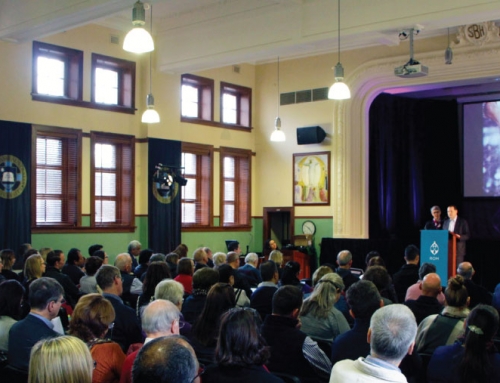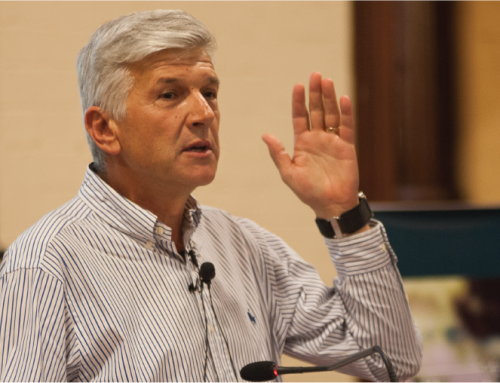“MAYBE I DO”- A REVIEW
By Kevin Andrews
Connor Court, October 20 2012.
It is rather odd to have to pen a lengthy tome defending marriage and family; but then again, we live in rather odd times. The historical and universal institutions were always assumed, enjoyed and celebrated. But of late they have come under unprecedented attack, so a defence is needed, and Kevin Andrews does that admirably here.
Anyone following the social science data of the past half century knows the tremendous value marriage has on couples, on societies, and on children. There is such a mountain of research now on the tremendous goods of heterosexual marriage that it is a full-time job just to keep up with it all. But that is just what Andrews has done here.
With nearly 1600 footnotes in a book nearly 600 pages long, this is a great compendium of what the data is telling us about ideal family structure, the significance of heterosexual marriage, and the way we can ensure the optimal wellbeing of our children.
As he notes, “The tragedy of the retreat from marriage is not the billions of dollars it costs each year: it is the personal and emotional trauma which research increasingly indicates affects many children, even into their adulthood; and the consequent diminution of health, educational opportunities, and well-being, including the stability of relationships of children whose parents divorced.”
The first of his four main sections does just this: it examines the wealth of data we have on the overwhelming importance of marriage for all concerned. Again, those who have been following this research will not discover much new information here, but it is nice to have it so well packaged together like this.
He summarises this massive amount of data this way: “Over four decades of social science research across western nations confirms one clear and unambiguous conclusion: A healthy marriage is the best source of physical and mental health, emotional stability, and prosperity for adults and children. It is also the best bet for attaining happiness and fulfilment.”
The second part of the book looks at how the retreat from marriage occurred, and what are some of the factors leading to the weakening and undermining of this institution. Plenty of variables feature here, including an overemphasis on individualism, a culture of rights, increasing materialism, changing labor force participation, social and legislative changes, and a harmful divorce culture.
Popular culture’s negative views on marriage, along with emphasis on career and consumerism have also led to the avoidance of marriage. After looking at the various causes, he quotes Jonathan Sacks who rightly said: “The fact that we have deconstructed the family – morally, psychologically, economically, politically – is the single most fateful cultural development of our times.”
Part three of this volume looks at recent changes in marriage patterns, and especially examines the rise in cohabitation, and the fundamental differences between it and marriage. In Australia about four out of five couples cohabit before marriage. The problems with cohabitation are many:
-Cohabiting couples are less likely to stay together.
-Cohabiting couples are more likely to have extra affairs.
-Cohabiting couples offer less stability for children.
-Marriages following cohabitation are 50 per cent more likely to break up.
-Marriages following cohabitation report less happiness and compatibility.
The final part of this book asks how we can rebuild the culture of marriage, and also addresses public policy options. What can be done to strengthen marriage both individually and socially? What policies might be put in place to support and maintain marriage, and deter those forces working against marriage?
He examines the ominous demographic changes taking place around the world, with falling birthrates having a huge impact on so many areas of modern life. “The most significant trend affecting families is the dramatic decline in the birthrates in most of the world, resulting in below-replacement fertility levels and the aging of the population. Family policies, in the absence of families, is a contradiction.”
The West is experiencing a major birth dearth. Russian population, for example, is likely to fall from 143 million to just 107 million by 2050. Pronatalist inducements are being tried in various nations to turn these worrying trends around. Singapore for example utilised them after they had a disastrous experiment with antinatalist policies. But it is easier to decrease birthrates than increase them.
Andrews looks at specific concepts to restore a pro-family and pro-marriage culture. These include Family Impact Statements to accompany all legislative proposals. Along with this is the Marriage and Family Policy Grid which asks four questions of any measure:
-Does it enhance marriage?
-Does it enhance the ability of parents to have children?
-Does it enhance good parenting skills and parental involvement with children?
-Does it enhance ongoing involvement of parents with children following separation?
Other items include more emphasis on pre-marital education, publicly promoting the value of marriage, making the taxation system more family-friendly, and offering more flexibility in work and family arrangements. He admits that getting serious about all this is not always easy, and few countries have a serious national family policy in place.
He argues that two key principles should underpin any family policy: it should protect and foster marriage and healthy families; and wherever possible, it should support, encourage and utilise family and community organisations, rather than supplant them.
His concluding remarks are right on the money: “How we preserve marriage – against the cultural and economic pressures that threaten to overwhelm it – as the foundation of healthy family life, the protective institution for children, the crucible of the free market, and the essential condition for democracy, will determine the health and longevity of the critical institutions of the western liberal experiment. The future of individuals, families, communities and nations is tied to the outcome.”
Quite so. Marriage and family are under heavy fire at the moment, yet they offer so many tremendous benefits to individuals, to children and to societies. We must not allow these invaluable institutions to be undermined and destroyed. They deserve protection, endorsement and celebration. This book helps us to do just that.






